�
�
�
�
�
�
� John wrote:
�
� I am writing for a friend of mine who has done a remarkable Spitfire� conversion but lacks the computer confidence to tell the story for� inclusion on "Little cars with big engines". I am attaching a number of� images of the car to this mailing. I hope I have not exceeded your� capacity to download this message. If so, please let me know and I'll send� the images in batches. There are more pix if anyone wants to see them.
�
� My friend's name is Larry Breitkreitz and his car is a '73 Spit 1500 which� is now powered wtih a Toyota 4AGE engine and 5 speed transmission. Larry� is a fine craftsman and perfectionist who is not afraid to tackle the big� jobs and is fussy enough to do them several times if he is not satisfied� that the work is "done right".
�
� Larry started with a well-used Spitfire which had suffered serious insult� by the DPO who had attempted to install a Mazda RX-7 Rotary engine. His� tool of choice seems to have been an axe as when Larry got the car the� rotary was lying in a large hole, which had been chopped in the firewall� and floor, supported only by a piece of wood. Perhaps the fact that the� gear shift lever would have been somewhere behind the driver when the job� was finished caused him to give up.�
�
�
�
�
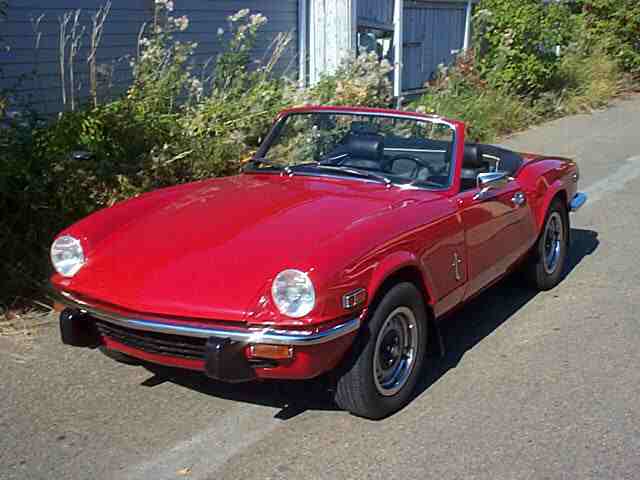 �
�
Larry Breitkreitz's 1973 Spitfire, with Toyota 4AGE 4-cylinder
� (as recorded by Dan Masters)� John wrote:
�
� I am writing for a friend of mine who has done a remarkable Spitfire� conversion but lacks the computer confidence to tell the story for� inclusion on "Little cars with big engines". I am attaching a number of� images of the car to this mailing. I hope I have not exceeded your� capacity to download this message. If so, please let me know and I'll send� the images in batches. There are more pix if anyone wants to see them.
�
� My friend's name is Larry Breitkreitz and his car is a '73 Spit 1500 which� is now powered wtih a Toyota 4AGE engine and 5 speed transmission. Larry� is a fine craftsman and perfectionist who is not afraid to tackle the big� jobs and is fussy enough to do them several times if he is not satisfied� that the work is "done right".
�
� Larry started with a well-used Spitfire which had suffered serious insult� by the DPO who had attempted to install a Mazda RX-7 Rotary engine. His� tool of choice seems to have been an axe as when Larry got the car the� rotary was lying in a large hole, which had been chopped in the firewall� and floor, supported only by a piece of wood. Perhaps the fact that the� gear shift lever would have been somewhere behind the driver when the job� was finished caused him to give up.�
�
�
The engine/transmission was obtained from a fellow who was restoring a�
collision-damaged Toyota Corolla GTS. He needed the body but not the�
drivetrain. The DOHC, 16 valve 4AGE engine is found only in this car or in�
the MR2. This a beautiful little engine to use in a Spitfire as it is�
close to the original displacement (1600cc) but has nearly twice the�
horsepower as it produces 124 hp. With fuel injection and computer�
control, the engine is quiet, very smooth and highly economical. It is�
also lighter than the original and will fit nicely in the car with�
appropriate modifications.
�
� Larry's goal was to have a completely stock-looking Spitfire and in this he� was successful. The only clue that the car is not what it seems is the� gear shift lever, which is slightly different from stock. Under the hood,� of course, everything is changed but to those who don't know Spitfire's the� work appears to be "factory-original" (except for the words "Toyota 1600� Twin Cam 16 valve" on the cam covers).
�
� The body was removed from the frame which was subsequently stripped� completely, sandblasted and painted. The new engine was hung from a chain� and suspended above the frame in order to determine the necessary� placement. Using trial and error methods the exact location of the engine� and the amount of modification necessary was determined. During the� fitting procedure, the body was loosely re-fitted as required. The hood� was checked for height problems but the everything appeared correct.
�
� The frame was modified as follows:
�
� The crossmember under the engine was cut out and replaced by two new� ones. These were fabricated from rectangular tubing and were placed on� either end of the area into which the sump would be located.
�
� The steering rack mounts were lowered 1/2 inch for clearance.
�
� The speedo cable had to be routed through the frame which was plated� around the hole.
�
� The frame was notched slightly to permit clearance for the clutch slave� cylinder.
�
� Engine mounts were fabricated using a modified Toyota mount on the� right and a new fabrication on the left. These were welded to the frame.
�
� The Toyota transmission mount was narrowed and welded into the Spit frame.
�
� Corvette air shocks were used in place of stock and were inflated as� required.
�
� A rear sway bar from a Ford Fox series body was used with custom mounts.
�
� The engine was installed using stock Toyota rubber mounts to the fabricated� steel mounts. A Mazda RX-7 radiator was installed in a left-offset� position using a custom fabricated radiator support/shield. A Pontiac 6000� cooling fan assembly was mounted on the forward side of the radiator and is� controlled from the Mazda cooling sensor. The Toyota oil cooler was used� and was mounted forward of the radiator with custom hoses to connect it to� the engine.
�
� The air cleaner/mass air sensor unit was mounted on the left side of the� engine compartment forward of the radiator and connected to the intake� plenum using two stock Toyota air inlet tubes. The stock Spitfire� cardboard engine shields were replaced with custom fabricated steel and� square tubing units which give a very tidy appearance to the engine� compartment.
�
� Larry made a custom exhaust header from the engine manifold outlets to the� pickup for the custom exhaust system which uses a muffler and resonator for� quietness. Inside the car, a transmission tunnel was made using steel� instead of cardboard. The whole interior and floor was insulated for noise� and heat prevention.
�
� The wiring was one of biggest jobs as Larry wanted to use the stock Lucas� wiring where possible. The Toyota computer was installed inside the car� under the dashboard on the left side and all relays, junction blocks and� harnesses deemed necessary were retained and mounted in appropriate places.� The result is a "Nippo-Lucas" setup. All engine control systems are� Nippondenso using the Japanese main relay/fuse box connected to the� battery. In-dash wiring and all other wiring is stock Lucas interfacing� with the Nippondenso as required - especially at the ignition switch. Dash� instruments are stock Spitfire including the tachometer. Everything works� properly.
�
� The interior and seats were re-finished using replacement parts from Moss� or Victoria British. Seats were locally re-upholstered to the correct� pattern, while the carpet was fabricated from scratch in order to fit the� modified transmission tunnel.
�
� The bodywork was repaired as necessary and painted in acrylic enamel. The� color is Honda's "Milano Red". Bumpers were rechromed and original� excellent pieces were used to finish the exterior and interior as required.� Wheels were powder coated and stock-sized tires were used. The original� decals and badges were omitted from the front and sides of the car to� enhance the clean lines of the design.
�
� The result is a very satisfactory car. It has been driven as much as 650� miles in a day and has attracted great attention at British and other car� meets. The car easily averages over 50 mpg (Imperial) when driven at� speeds of 70 mph or greater. The five speed keeps the engine loafing along� and the powerful and responsive engine makes passing a pleasure. Handling� is enhanced because the engine is lighter than the stock unit and the� stiffer rear end keeps the whole thing in balance. Top speed has not been� tested but it is probably in the 125 mph range while acceleration is very� satisfactory.
�
� The car is not a hot rod but is perhaps what the Spitfire could have been� with a bit more development - a true GT sports car with excellent� performance and handling to match.
�
�
�
�
�
� Larry's goal was to have a completely stock-looking Spitfire and in this he� was successful. The only clue that the car is not what it seems is the� gear shift lever, which is slightly different from stock. Under the hood,� of course, everything is changed but to those who don't know Spitfire's the� work appears to be "factory-original" (except for the words "Toyota 1600� Twin Cam 16 valve" on the cam covers).
�
� The body was removed from the frame which was subsequently stripped� completely, sandblasted and painted. The new engine was hung from a chain� and suspended above the frame in order to determine the necessary� placement. Using trial and error methods the exact location of the engine� and the amount of modification necessary was determined. During the� fitting procedure, the body was loosely re-fitted as required. The hood� was checked for height problems but the everything appeared correct.
�
� The frame was modified as follows:
�
� The crossmember under the engine was cut out and replaced by two new� ones. These were fabricated from rectangular tubing and were placed on� either end of the area into which the sump would be located.
�
� The steering rack mounts were lowered 1/2 inch for clearance.
�
� The speedo cable had to be routed through the frame which was plated� around the hole.
�
� The frame was notched slightly to permit clearance for the clutch slave� cylinder.
�
� Engine mounts were fabricated using a modified Toyota mount on the� right and a new fabrication on the left. These were welded to the frame.
�
� The Toyota transmission mount was narrowed and welded into the Spit frame.
�
� Corvette air shocks were used in place of stock and were inflated as� required.
�
� A rear sway bar from a Ford Fox series body was used with custom mounts.
�
� The engine was installed using stock Toyota rubber mounts to the fabricated� steel mounts. A Mazda RX-7 radiator was installed in a left-offset� position using a custom fabricated radiator support/shield. A Pontiac 6000� cooling fan assembly was mounted on the forward side of the radiator and is� controlled from the Mazda cooling sensor. The Toyota oil cooler was used� and was mounted forward of the radiator with custom hoses to connect it to� the engine.
�
� The air cleaner/mass air sensor unit was mounted on the left side of the� engine compartment forward of the radiator and connected to the intake� plenum using two stock Toyota air inlet tubes. The stock Spitfire� cardboard engine shields were replaced with custom fabricated steel and� square tubing units which give a very tidy appearance to the engine� compartment.
�
� Larry made a custom exhaust header from the engine manifold outlets to the� pickup for the custom exhaust system which uses a muffler and resonator for� quietness. Inside the car, a transmission tunnel was made using steel� instead of cardboard. The whole interior and floor was insulated for noise� and heat prevention.
�
� The wiring was one of biggest jobs as Larry wanted to use the stock Lucas� wiring where possible. The Toyota computer was installed inside the car� under the dashboard on the left side and all relays, junction blocks and� harnesses deemed necessary were retained and mounted in appropriate places.� The result is a "Nippo-Lucas" setup. All engine control systems are� Nippondenso using the Japanese main relay/fuse box connected to the� battery. In-dash wiring and all other wiring is stock Lucas interfacing� with the Nippondenso as required - especially at the ignition switch. Dash� instruments are stock Spitfire including the tachometer. Everything works� properly.
�
� The interior and seats were re-finished using replacement parts from Moss� or Victoria British. Seats were locally re-upholstered to the correct� pattern, while the carpet was fabricated from scratch in order to fit the� modified transmission tunnel.
�
� The bodywork was repaired as necessary and painted in acrylic enamel. The� color is Honda's "Milano Red". Bumpers were rechromed and original� excellent pieces were used to finish the exterior and interior as required.� Wheels were powder coated and stock-sized tires were used. The original� decals and badges were omitted from the front and sides of the car to� enhance the clean lines of the design.
�
� The result is a very satisfactory car. It has been driven as much as 650� miles in a day and has attracted great attention at British and other car� meets. The car easily averages over 50 mpg (Imperial) when driven at� speeds of 70 mph or greater. The five speed keeps the engine loafing along� and the powerful and responsive engine makes passing a pleasure. Handling� is enhanced because the engine is lighter than the stock unit and the� stiffer rear end keeps the whole thing in balance. Top speed has not been� tested but it is probably in the 125 mph range while acceleration is very� satisfactory.
�
� The car is not a hot rod but is perhaps what the Spitfire could have been� with a bit more development - a true GT sports car with excellent� performance and handling to match.
�
�
�
�
�
�
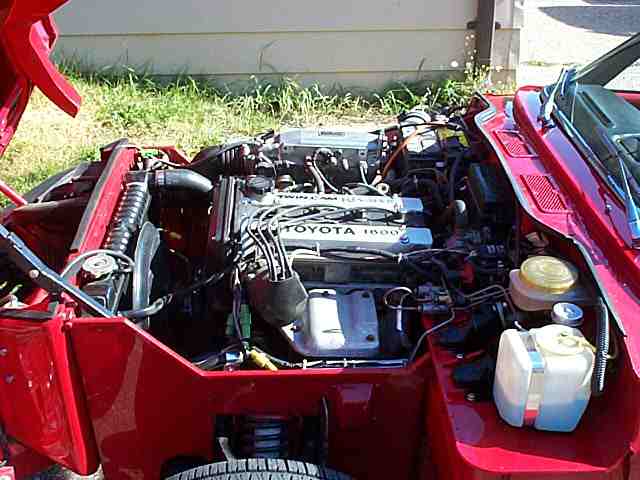
�
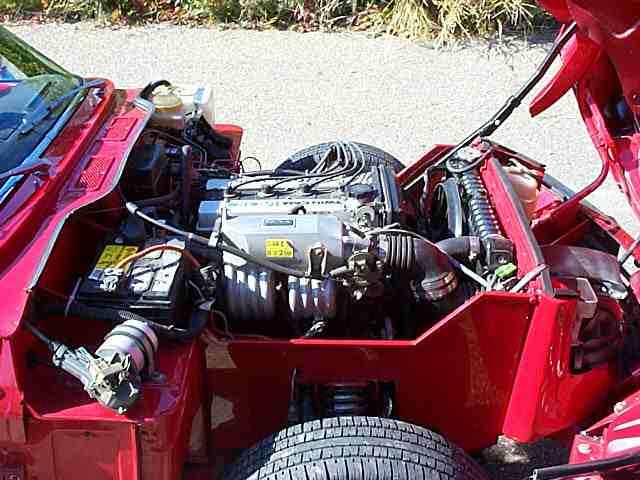
�
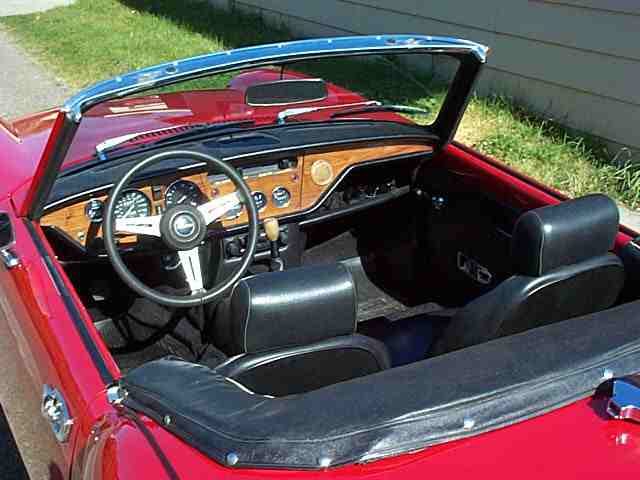
�
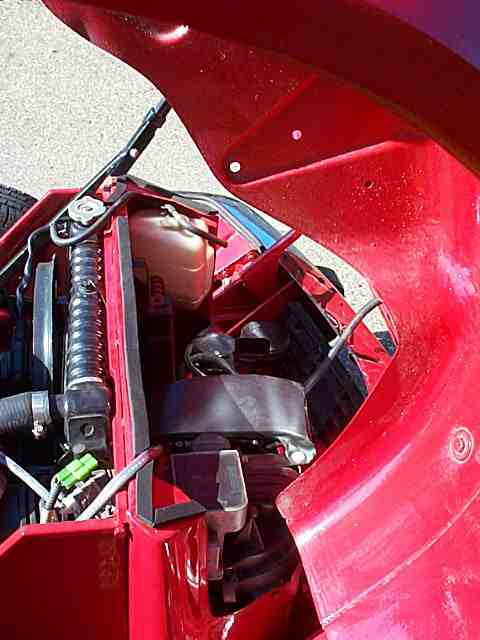
�
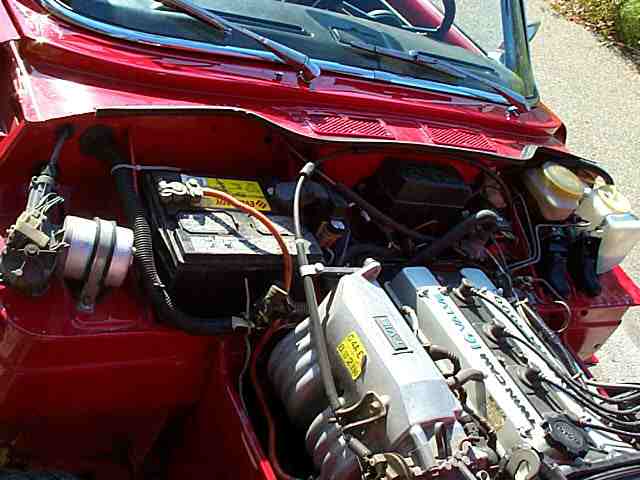
�
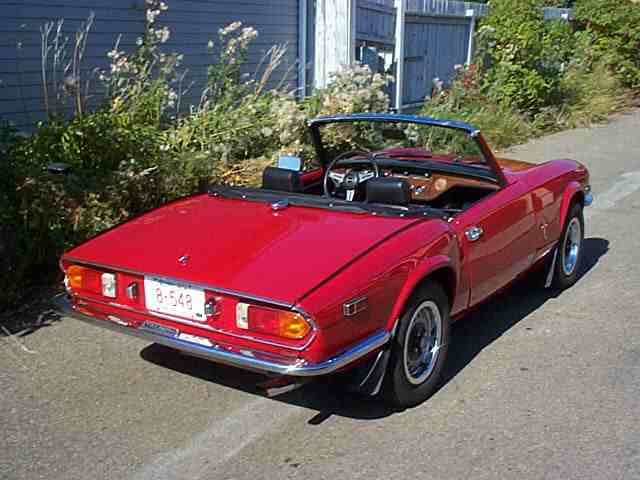 �
�

